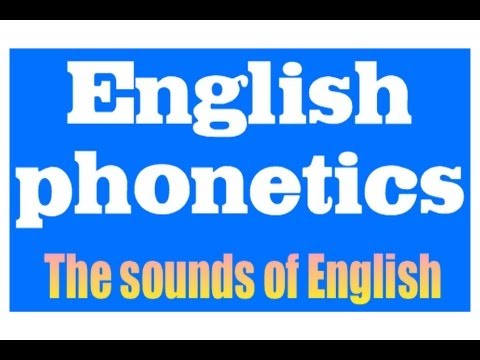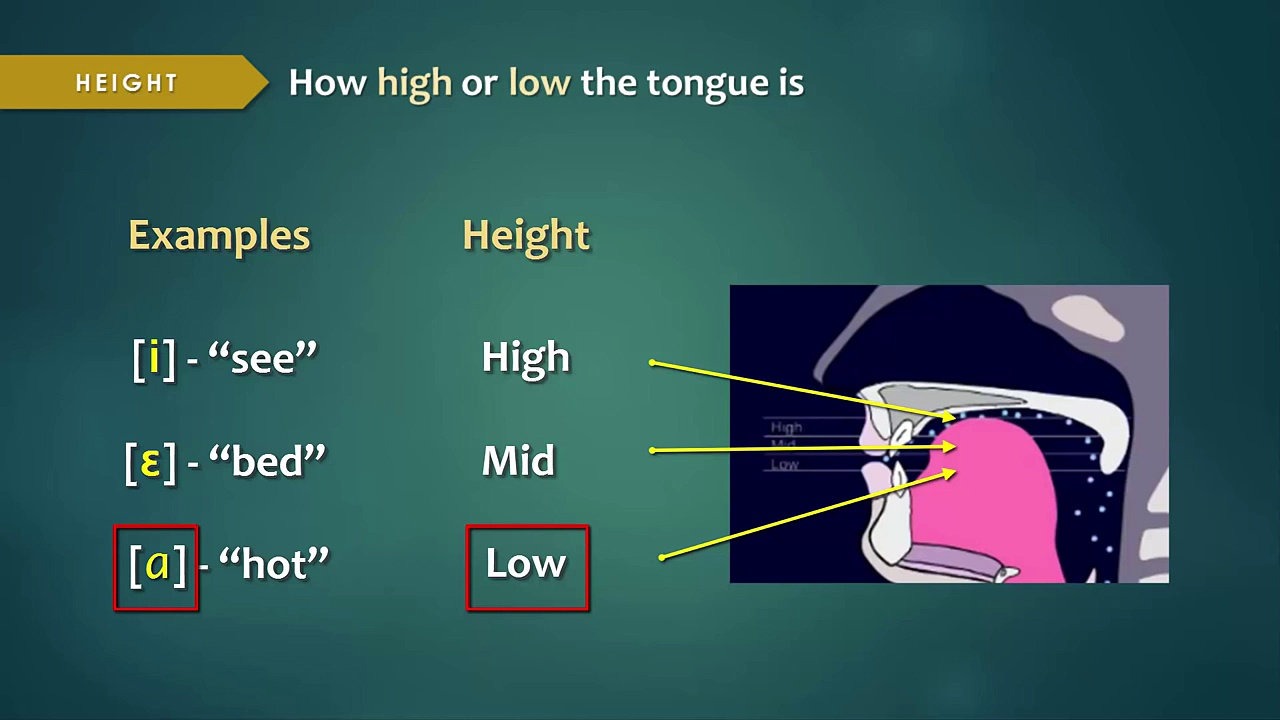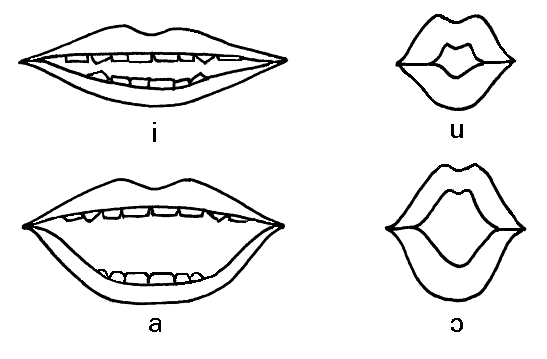Phonetics

3. Vowels
3.1. Classification of Vowels
Tongue Height: 
It refers to how high or low our tongue is. Thus we can say that /i/ is a high vowel sound, /e/ is intermediate, and /a/ is low. You may notice the movement of the tongue if you pronounce these three sounds.
Tongue Shape:

When we make a vowel sound, our tongue is in a specific position inside our mouth. For example, if you make the vowel sound /i/ and then /u/, you will notice that your tongue moves back, and if you make the sound /i/ and then /a/, your tongue moves down. The following chart shows the position of the tongue when we pronounce the English vowel sounds. You have to imagine that this chart is inside the mouth. For each sound, there is one phonetic symbol that belongs to the International Phonetic Alphabet.
Lip Rounding:

It refers to the position of our lips, when we make the vowel sounds. When we make the sound /i/, the corners of our mouth are further apart, so we can say that this is a spread vowel sound. When we pronounce /u/, our lips are rounded, and for the sound /a/ our lips are neither spread nor rounded, so we say that it is an unrounded vowel or neutral.
